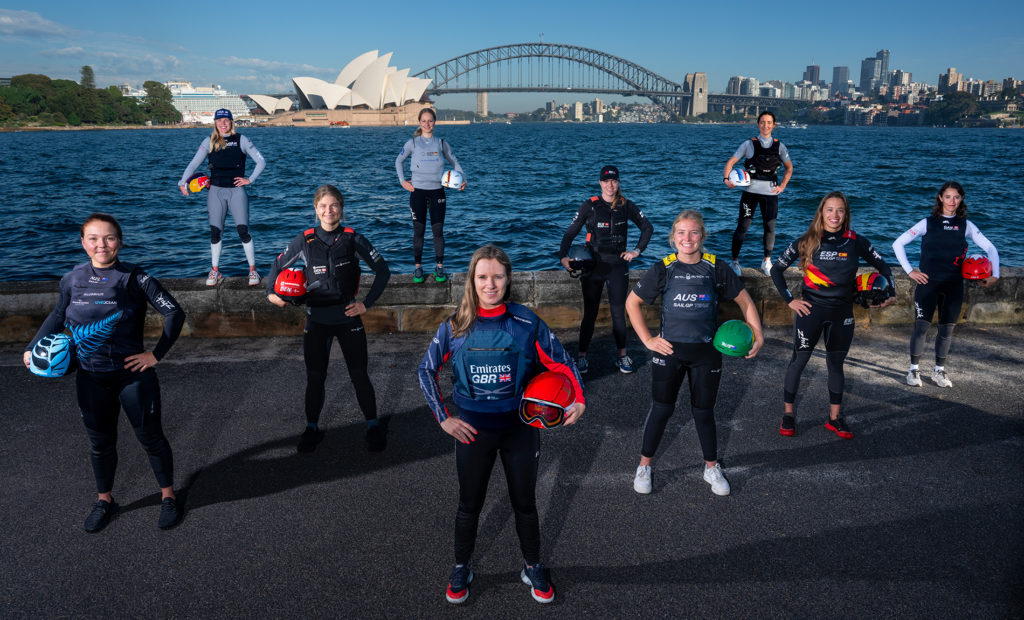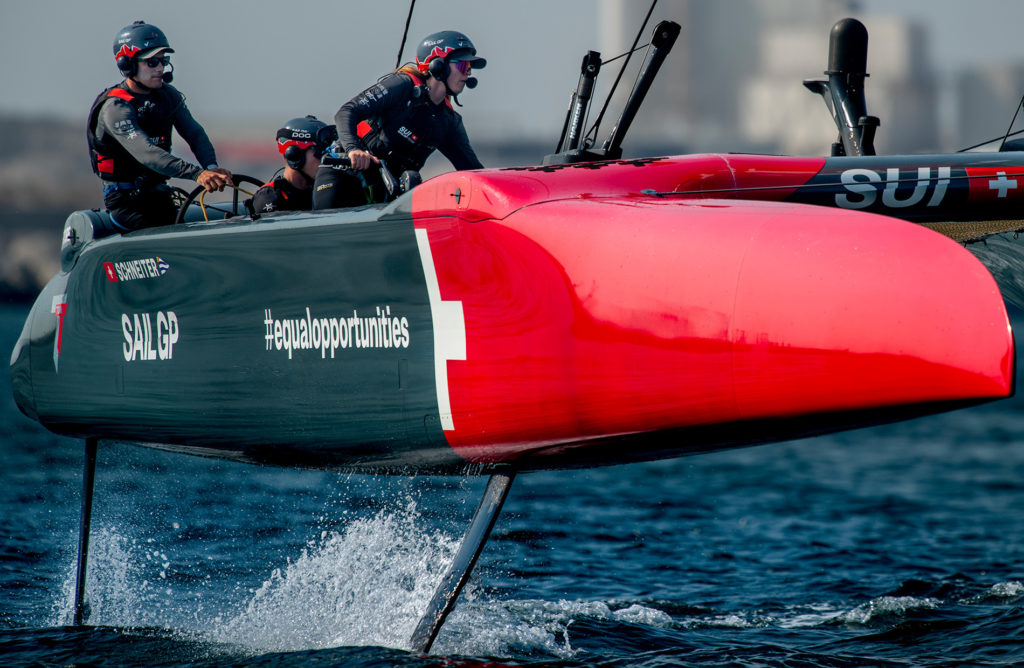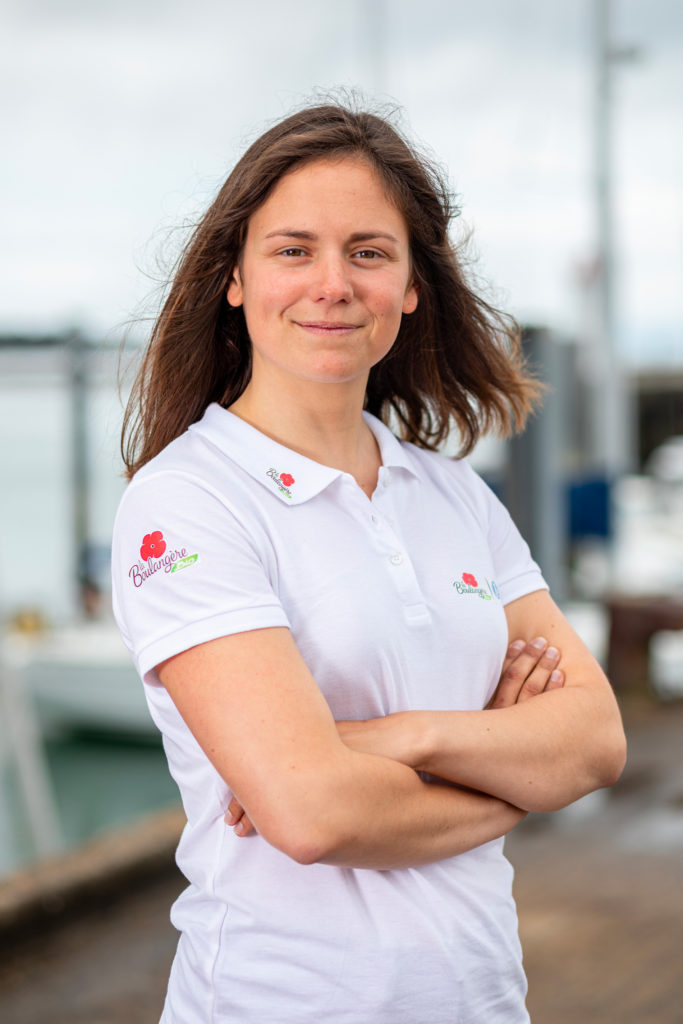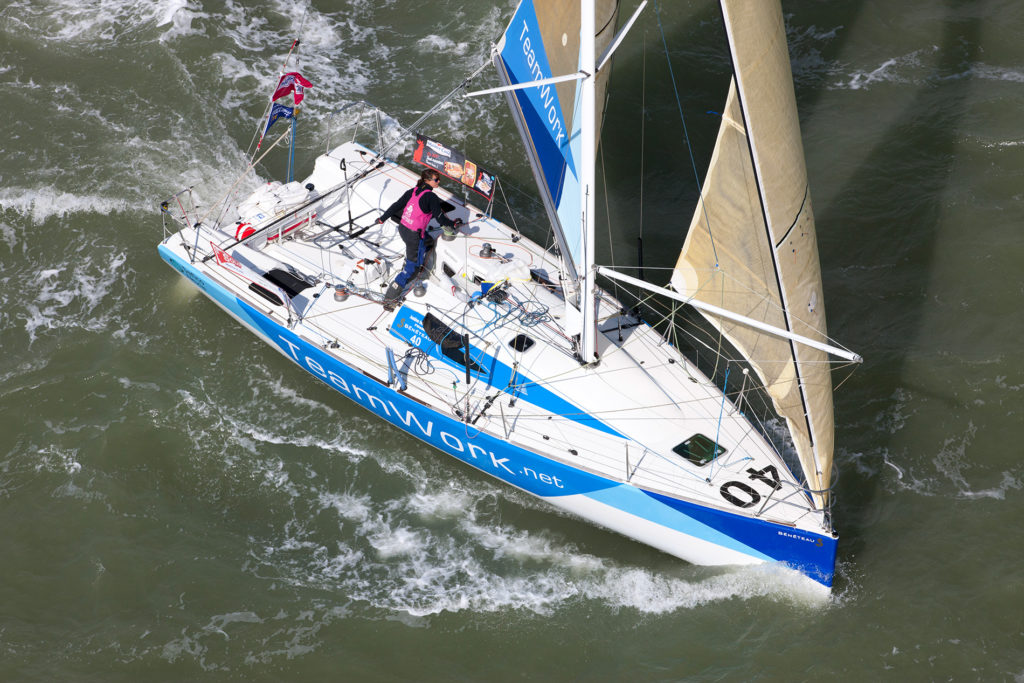Professional sailing is stepping up its efforts to promote the role of women on board. But one question remains: are salaries keeping pace?
Text: Grégoire Surdez
Sailing doesn’t feed the man. Ever since sailors decided to compete against each other, it’s been a common saying on the pontoons. From the Olympics to offshore sailing, via the America’s Cup and SailGP, the situation has changed enormously. Some of the skippers and helmsmen of the big teams make a comfortable living. But what about women, who have taken a long time to legitimize their presence on board in an environment that has long been hermetic?

In the world of ocean racing, salary inequalities are tending to disappear. For the simple reason that we are often in charge of our own projects,” explains Amélie Grassi, young French sailor on Class40 La Boulangère Bio. This is the case for me. That means I can keep control of my level of remuneration. Then there’s the part where you’re hired as a crew member on crewed experiences. And that’s where we obviously don’t have the same control over wages. As far as I’m concerned, I’ve been rather lucky, because both on the Ocean Race with Biotherm and at the moment in Actual’s routing unit, I’m paid the same as the men for the same skills. In my opinion, this is completely normal and something that is totally integrated by these two teams.”

The cause of equality is one of the themes closest to Amélie Grassi’s heart. “I talk about it often and willingly, because not everything is perfect yet. There are conventions and standards on minimum levels. And more and more teams are sticking to them. The situation is more complicated for young people. Because of their lack of experience, they are too often offered conditions that are not acceptable.” It’s as if just being on board and learning is enough.

The SailGP example
However, there are professional circuits that do things differently. Such is the case with SailGP, which offers an original and egalitarian remuneration system. At Switzerland SailGP, girls are paid without any form of gender differentiation. We try to be beyond reproach,” says Tanguy Cariou, Team Manager of a team that gives real meaning to a female presence aboard F50s. Girls are crew members in their own right. I don’t like talking about quotas, because the very word is discriminatory. That’s probably the only way to make progress. But the place of women on board will no longer be a cause to be defended when two or three girls are lined up without this being an obligation. I would stress that sailing is not just a physical sport, and that many key positions could be filled by women.”
On Russell Coutts and Larry Ellison’s circuit, at least one woman is on deck. In the event of a podium finish at a grand prix, she will be entitled to the generous prize money distributed in SailGP. Over the course of a season, $7 million in prize money is awarded. The annual Grand Final is endowed with $2 million, which goes to the winner, according to the Anglo-Saxon adage ” the winner takes it all“. This bonus system is very interesting and rewards the top three finishers,” explains Tanguy Cariou. For each GP, $400,000 is awarded to the teams that make the final and finish on the podium. The first receives 200,000, the second 120,000 and the remainder for the third. This money is then distributed by each team and goes mainly to the sailors. We have to provide SailGP with a list of those who will receive this bonus. We want to make sure that it’s those who have been on the water a lot who get this money.”
Can we deduce from this that any wage discrimination against female team members would be unacceptable? It’s absolutely certain,” says Tanguy Cariou. But once again, it doesn’t concern us because we’ve gone beyond the stage of equality.” Always in search of performance, most teams need the best people on board. And talent comes at a price. “There are girls in SailGP who can earn a bit more than some of the men.” Isn’t it said that what’s rare is expensive?

The TeamWork saga
Talent has a price that goes beyond gender. For Justine Mettraux, supported for ten years by TeamWork, the situation is clear. “While we don’t give figures for Justine’s salary, we can say that she is paid the same as male skippers with projects equivalent to hers. It’s also in the company’s DNA to ensure equal pay for men and women. What’s more, in addition to her salary, Justine enjoys the same benefits – 13th month, pension fund, health insurance – as all TeamWork employees”, says Philippe Rey-Gorrez, CEO of the Geneva-based company, which is extremely active in supporting athletes from the worlds of sailing and mountaineering.

The case of the Women’s America’s Cup
The Genevan can therefore concentrate fully on her Vendée Globe objective. A luxury not available to her sister Élodie. Selected by Alinghi Red Bull Racing to compete in the first-ever women’s America’s Cup in Barcelona this autumn, the eldest of the Mettraux siblings gave up her dream. I knew the financial conditions from the start of the process,” she admits. And I went through with the hope of being able to change things from the inside. But that wasn’t possible and I had to give up. For me, it wasn’t possible to devote several months to preparation and competition without receiving a decent salary.”
Sometimes it takes an outsider’s viewpoint to dispassionately address a debate that has caused quite a stir in the sailing world. Amélie Grassi’s view points to an enduring problem. In my opinion, the women’s America’s Cup is too similar to the youth America’s Cup,” she says. As much as I can understand and hear that young people are seizing this incredible opportunity to launch their careers and aren’t looking at the salary, I feel that experienced women sailors shouldn’t be treated like young people.” Women are still not sailors like the others.


